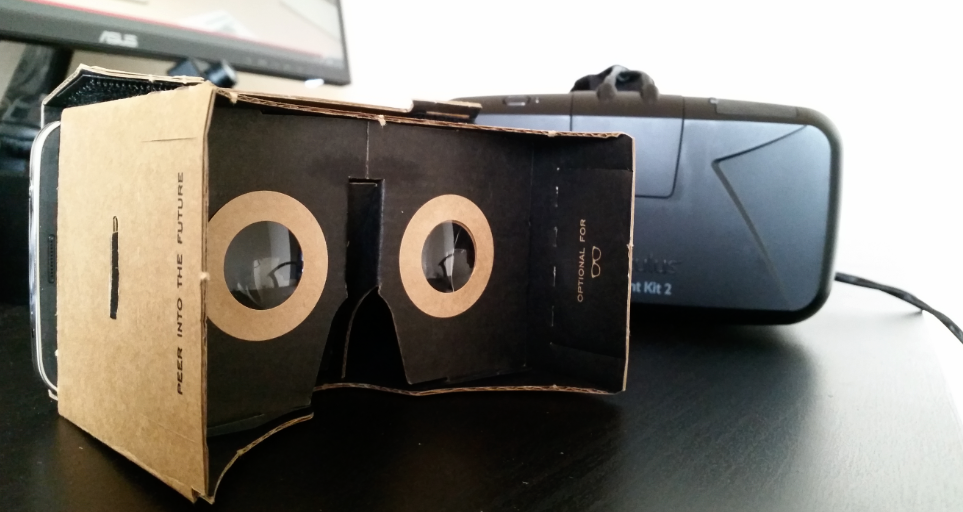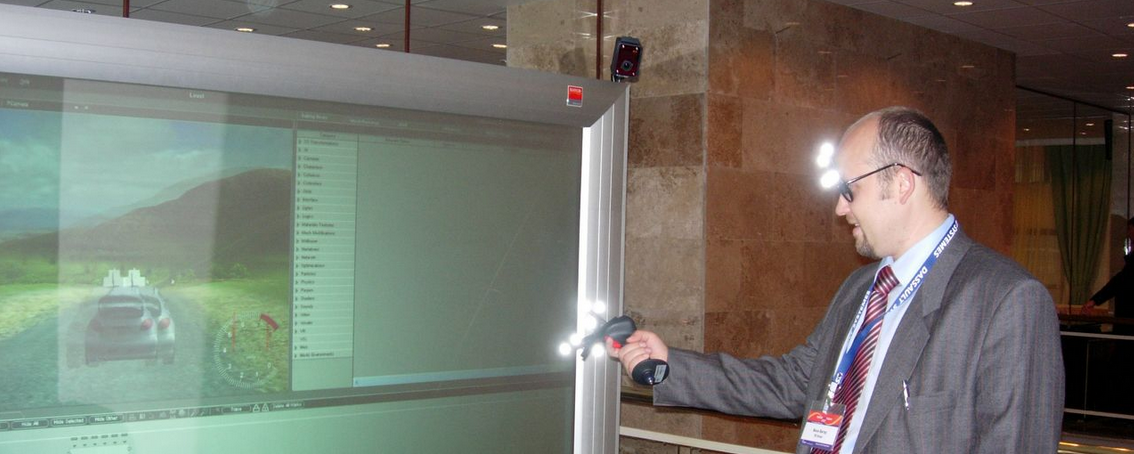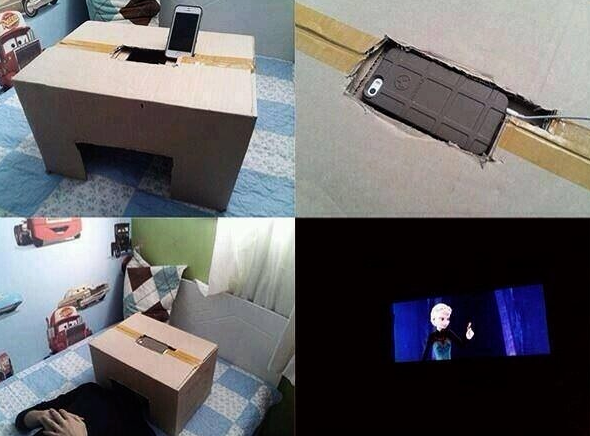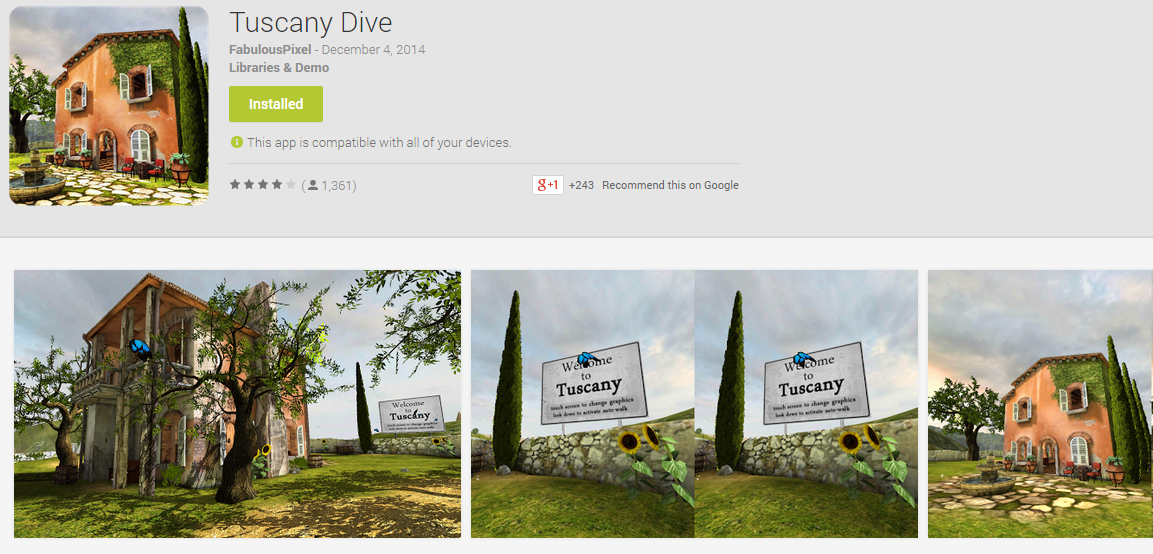On the threshold of a new reality

Very soon, virtual reality technologies will become as accessible as devices we are used to, such as a monitor or a phone. However, this will not be some kind of unexpected revolution or fantasy that we have seen in the films. At least not in the coming years. Let's try to figure out how VR technologies will continue to develop, what problems are to be solved, and which of the current directions has a better chance for further life.
Where do devices come from
Virtual reality helmets actually exist for quite some time. But for the first time I managed to fulfill my childhood dream and plunge into this reality, only in the year 2007 (expensive and weighty, for a few thousand dollars). And I must say - I was terribly disappointed. In fact, it was just a stereo cinema, where you sit in a large black room and see a small screen somewhere in the dark.
Many VR devices in the gaming industry initially come from expensive devices used in serious games. And in this direction it is not uncommon to judge which “new products” can be expected in the future. So Oculus and similar innovations are actively used to create military simulators in the United States. A “software” for these simulators is often created on the basis of existing popular shooters.
')

Working in this direction for several years, I also had the opportunity to visit the virtual reality room (Cave), try out gloves, various VR devices and, of course, play around with Augmented Reality. Development for these devices was mainly conducted on the expensive engine Virtools and other outlandish software.

But no matter how I puzzled, how this can all be involved in the development of games, nothing sensible came of it. And in the end, just returned to geymdev. In addition, Unity loomed on the horizon (at that time purely under the Mac) and became much more interesting. Next, iPhones and iPads captured the world, Kinect and other joyful things went on sale. And in 2012, Oculus Rift was finally released on Kickstarter. And then, I once again felt that "the future is already here."
Virtual reality is still very small.
Thanks to the Russian businessmen, there was a certain amount of pressure around Oculus. Appears more and more atractions on this base. On this wave, people often spend money waiting for something supernatural. But for now, alas, it’s not possible to feel yourself in the shoes of a lawnmower. And after a while the helmet goes on the shelf until better times.

There are still few sensible projects, and the existing big games are simply not suitable for long-term use of helmets. For a comfortable game, it is not enough just to connect the Oculus SDK. It is much more important to properly think about usability and gameplay. Therefore, let's face it - to play until almost nothing. And the most interesting projects are usually very small or in the early stages of development.
But time does not stand still and soon there should be quite a few interesting projects. In general, I am also developing VR games now. And in order to be closer to this direction, I even moved to California for a while and try to attend relevant events, communicate with insiders, etc. But for now this is still an experimental direction and a lot of nuances and questions appear in the development process. Habitual solutions do not work here.

At the conferences, however, they mostly show outright trash. There are still few large and serious companies doing anything in the VR market. But dull student crafts do not add colors to the overall picture. Although the press and romantic indie from them in strange delight. I hope the world of virtual reality will not build them.
Management problems are still not resolved
There are many different attempts to create the very “killer device” for VR, which will solve all the problems with control at once. But so far, except for Leap Motion, it all looks more like a BDSM attribute, which has a very small chance of becoming a mass product. Of course, many of the devices are impressive (such as platforms for moving), but usually these are all just “toys” and pumping money from unintelligible investors.

In general, the most interesting virtual reality can be in multiplayer projects. After all, this is what many dream about - joint “adventures” in a certain parallel world. But for this you need to first solve the existing problems with management and quite common nausea.

It is still expensive and cumbersome.
At the moment there are helmets that only show the image and track the position of the head, sometimes transmit sound (such as Oculus Rift, Project Morpheus, Microsoft Project Neo, etc.), as well as fully stationary “mobile” helmets.

The main advantage of plug-in helmets is that you can play “big” games, and use a gamepad or any other available devices to control. But when VR mode is on, FPS drops significantly and many games ultimately slow down (which makes it impossible to play in a helmet). The same often affects the quality of existing projects (it is easier to show the gameplay than a beautiful picture).
In addition, to connect such helmets, it is not uncommon to spend time adjusting, and in addition to get another pile of wires from the computer to the helmet (and the camera in the case of the Oculus DK2). Plus, you can add headphones that wear over a helmet. Convenience is not at all, but for the development of quite fit. Yes, and many of these issues will be solved in future versions.

But the main disadvantage of plug-in helmets is likely to remain the price. Not every user decides to spend a few hundred dollars on such a miracle. Discounts for Russia all the more do not have to wait. And it is not known how much time will pass before this decision becomes truly massive.
Most likely, hardcore players will buy such helmets (for large PCs and console games). This will become a definite niche, but hardly something more (for consoles, before, there were helmets like the same Eye-Trek). Another toy for gamers like Kinect.
But there is hope
The smartphone market has grown quite quickly and will continue to grow at a decent pace and beyond. IPhones, iPads and androids have already become a necessity rather than a luxury. That is why mobile virtual reality helmets have all chances to become a mass product. And for most users, this will be enough.
Even at the latest conferences, Samsung Gear by Oculus was clearly demonstrated as a higher priority device. After all, Oculus itself is made on the basis of the same screens. And I must say - it looks great, although it still requires Samsung Note.

One of my favorite developments in this direction is Cardboard. A helmet, for a couple of tens of dollars, may not give a good viewing angle and is not so comfortable. However, for development, both small demonstrations and primary VR experience are more than enough. And it is not a pity if something suddenly scratches or breaks. Although many still do not take him seriously.

Another significant moment is the number of downloads. In the top page of the Oculus is an average of 20,000 installations. Whereas VR apps on Google Play are gaining 500,000 installations without problems. Although there are no full-fledged games practically on Andoid / iOS. But it is only a matter of time. Recently, for example, Temple Run was shown for Samsung Gear. And the Tuscany demo looks much better and works on the Samsung Galaxy than on the Mac Air.

By the way, one of the best projects for mobile phones is now with our compatriots, Fibrum. Everything is fine there with graphics and control. And recently their devices appeared on the shelves of Re: Store. What is already a good help Oculus for 40tr on Avito or eBay.

In general, since this is still a new direction, the most important thing for users is experience, gameplay if you want. At this stage, it is more important than graphics, as is the case with the Wii. For example, often games from the third person look more interesting than from the first. And the range of projects is not limited to some games. Educational and business applications, 360 videos and maybe even social services. All this gives people a new interesting experience, which means it will be in demand.
One step behind
But, unlike plug-in helmets, the issue of high-grade tracking is still not resolved in mobiles. As in the Oculus Rift DK1 - only head turns are tracked, while the position in space is ignored. This leads to quite strong constraints in the design, as any excess movement inevitably leads to nausea. But to solve this problem at the expense of an external camera, in any case, is not very convenient. And I hope soon they will come up with a solution that is suitable for both types of helmets.
Mobile helmets are also worse off. All these external gamepads will not solve the problem. Ideally, in my opinion, now you need to use the camera of the phone itself. Suppose that it does not give accurate tracking of the hands, but it is definitely not a problem to track the sweeps and basic movements. And the position of people (or other helmets) nearby.
The third, equally important problem is overheating. After 10 minutes of launching some decent application, the smartphone overheats. This does not create discomfort for the head, but it doesn’t benefit for sure. And the time of the game is very limited.

It seems to me an interesting option, for hardcore players, VR streaming could be. That is, if the same Steam made it possible to use mobile helmets as monitors (with the transfer of tracking data and a camera to a PC and the possibility of external tracking). For long use mobile phone could be connected with one cable for recharging. Then many questions would be solved and everyone would be happy.
Much will be decided in the coming year.
I do not know how right I will be in my predictions and proposed ideas. However, what can be said for sure, virtual reality will be very soon. Insiders predict that the problems described above will be solved in the next couple of years. I hope that it will be like that. Since then you can add tactile communication, smells and other factors that affect the degree of immersion.

I am opposed to this new world being an alternative to the existing one. But it can be useful and interesting. In the meantime, the market is still being formed and the big players have not taken it - it's time to create something cool in this direction and get the first laurels (as it was with the AppStore). I hope that among compatriots over time there will be more developers who will become heroes of virtually reality.
Source: https://habr.com/ru/post/247155/
All Articles